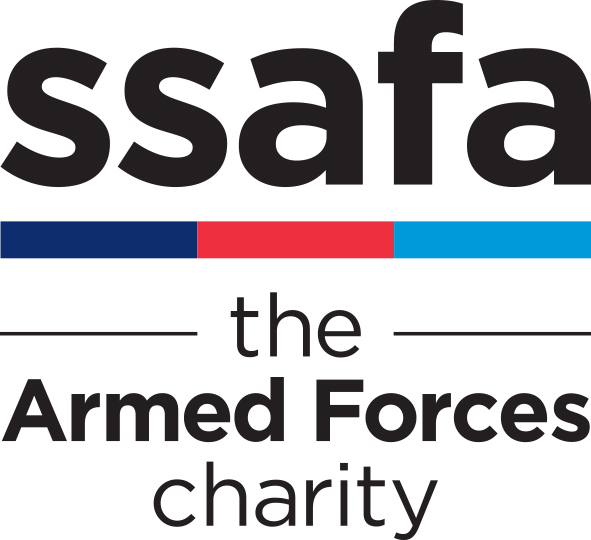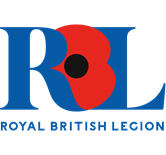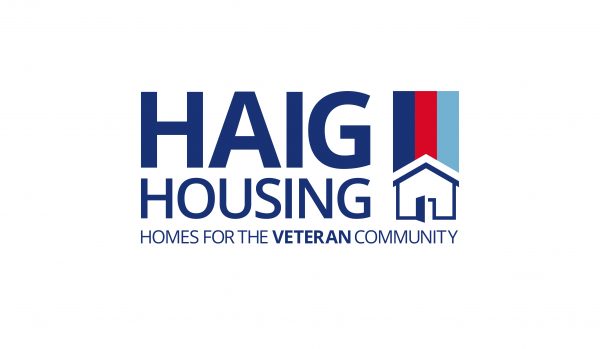The Veterans project was established to help Veterans living with chronic pain and other limiting conditions. The simple idea was to develop a specialist service just for veterans because feedback, requests for help and experience in the field had identified that veterans often struggled to access or benefit from work delivered in the wider civilian community.
The trouble with chronic conditions is that they often involve a long and harrowing journey through the medical system which ultimately ends in disappointment. Ultimately people reach the limits of clinical help and are left facing the stark reality of having to deal with an intractable condition on their own. This often leads to a difficult mix of: bewilderment, frustration, anger, low mood, stress, anxiety and an overwhelming sense of being abandoned and isolated. For many veterans these condition related problems can exacerbate pre-existing distress caused by adjustment issues, stress, trauma and difficult family life.
Feedback and experience of working with veterans before the project started informed us that these experiences were likely to be felt especially acutely by veterans who were already struggling to adjust to life outside of the structure and certainty of serving in the armed forces.
We had noticed that veterans seldom attended our regular community groups and that when they did come they often had special needs that a community based project could not meet. Our trainers were told that issues linked to trauma and isolation meant that veterans often said that they found it difficult to fit in or tolerate civilians.
The project was therefore developed to help a particular group of people who are often isolated for a variety of reasons, may be struggling to cope with life generally and feel isolated from the help that they need. Many may also be struggling with issues related to trauma that mean they find it hard to socialise.
To address the needs of veterans and improve access we developed the idea of providing training, education and support specifically for veterans.
We developed two basic ideas – 1-1 work and veteran specific groups
1-1 work
The basic idea was to provide the kind of input that people would gain from our standard 5-week intensive group based course, but to deliver this on an individual basis. The plan was that the sessions could be delivered remotely through video link or telephone. We also felt that 1-1 work would enable a way of providing help without the burden of travel for the client so that they could access help from the comfort and security of their home.
It also meant that at a practical level, a service could be delivered effectively without the cost to the organisation of travelling potentially long distances to see individual clients.
The parallels between group work and 1-1 work are stronger than you might think. In essence there is less noise in a one to one session, but the principles are the same. In fact it all boils down to the relationship created be that 1-1 or 1 to many and the main ingredient in that relationship is trust. Experience so far during the project it seems that trust at all sorts of levels is the vital ingredient for working with people who have been in the forces. In fact it’s the key ingredient for all our work. Other vital components include: knowledge, humanity, humour and rapport.
Courses delivered in a group format have to have a wide focus so that people can pick out what is most relevant to them. There can therefore be lots of people running in parallel pursuing their own individual agendas that we am not fully aware of. Whereas, with individual work we can get to know the individual and their story, we then start with a wide focus and identify key areas to work on together. The process is one of finding the specific keys that will help them to achieve the goals they share with us.
Just like group work, with 1-1 there is a need for a mixture of learning, discussion and homework. But with the 1-1 work, the learning is drip-fed in to more wide ranging discussions. The skill is in choosing a new idea and waiting for the right moment to pop it into a discussion, or to chase up an earlier action.
Just as with group work, some things are circular. So an idea introduced early gets reprocessed later as part of a different change. For example many people push themselves too hard. Introducing the ideas of pacing early often meets with resistance, but this is further processed when we look at ways to affect the wider picture of stress and unhelpful beliefs.
In every case we find ourselves working in different ways, but ultimately it’s about creating a safe environment in which we can share understanding and build motivation to make positive change. In summary the approach has been similar for all, but the content has varied greatly. A summary of the ‘process’ follows:
Process
The 1-1 work has been set up on the basis of gently building a working relationship and then focussing in on what is needed by a process of review, discussion and resource sharing. Below is a summary of this has worked in practice:
- Enquiry to Pain Association Head Office who send contact details to the Lead Trainer
- Initial phone call made to help them to get to know me and vice versa. This is also helpful to explain what is on offer, address any misunderstanding and hopefully find a match of what they want and what we can realistically provide
- Building understanding and rapport starts in the first contact and is a vital and central on-going process.
- In the first full session we usually discuss their situation in detail and try to get a sense of their needs. Wherever possible we use a spider chart to identify their needs.
- Appropriate handouts are provided for reading and homework. These are directly relevant to the topic being worked eg. Pacing. ‘Background information’ is also sent covering topics that will help to improve the bigger picture and address the real issues e.g. Stress – which is often the issue that drives most problems.
- Relaxation downloads or CDs are issued for home relaxation practice.
- In the sessions that follow, we explore further the themes that develop from the first session gradually narrowing the focus to particular topics with homework tasks where appropriate.
- Email support is a great way to fill the gaps between sessions and engender motivation. It also allows us to tailor a message and give helpful targeted help based on ongoing discussions.
Reflections so far
Overall the 1-1 process works well. Above all else people are pleased to have some help that is not part of the ‘health merry go-round’. They often also say that they find it refreshing to have time to work with someone who they can relate to.
Sessions are usually 45mins-1 hour which gives time to review progress, discuss their situation and then find the perfect moment to introduce a new idea to help them. This is a good way to work because many people are defensive and need new ideas introduced at the right time to them in a way that has the right context, makes sense is non threatening.
One positive surprise has been that several participants have commented that they ‘prefer’ working at distance because they find in person 1-1 annoying or intimidating. Many report that they have struggled with some health professionals who they have found ‘patronising’. This is of course common in the world of pain management where many civilians also comment that they found interactions with clinicians to be difficult. Working at distance 1-1 is a mixed blessing. 1-1 makes it easier in terms of relationship building and content. But not being with them makes personal interaction more difficult, even when using video link. The lack of a group to belong to is obviously an issue, but the people accessing the project often find groups inappropriate to their needs.
Benefits of the project
So far we have worked with people who have all been very different with wide variations in lifestyle, abilities and motivations. The following anonymous examples hopefully give a sense of what is involved and what has been achieved. Everyone is anonymised.
Stephen (RAF)
We initially looked at pacing to regain fitness and ways to improve sleep. Later this developed in to rebuilding confidence and dealing with the constant stress of a difficult family life.
Graham- (Army)
Completed a group based self-management course and then I was able to offer help dealing with the stress of a return to work and dealing with a difficult family life. He found it helpful to understand that his training had made him hyper-vigilant and reactive which was reflected in his reaction to his back pain. Focussing on reducing stress rather than seeing just pain as the problem was one of the helpful outcomes.
Tom – Army (Infantry)
A very difficult life with no family support. We agreed that we would ‘just chat’ and I would work in a supportive way ‘picking off’ anything that was relevant to helping him. After some time it emerged that his dog was the centre of his life and we used this fact to get him in to building up a walking regime with the ultimate goal of climbing a munroe.
Mary (Army)
This lady wanted to return to fitness but could not understand what her physiotherapist was telling her to do. We looked at using baselines and set a framework for her to work to. She said that the ‘penny finally dropped’.
Yvonne (RAF)
We worked in depth so that she could understand pain in the context of trauma.
We shared relaxation/coping techniques that enabled her to fly without her usual panic attack
Doug (Army)
We spent considerable time just talking and helping him to understand how he could have pain without injury. How we could de-escalate his anger and ways in which to gradually function better using pacing and baseline ideas. Above all he benefitted from understanding that he was ‘not mad’ and how his pain was a reflection of his general over reactivity. He said that he really benefitted from the fact that ‘ you get it, you’re not patronising and you can explain things in a way that I can understand’.
We talked about pain being a situation in which ‘the punishment didn’t fit the crime’ and that his bossy training corporal was shouting for little reason.
Brian (Navy)
We discussed his lack of self esteem because he was not working. We looked at what he was good at and took the focus away from what he couldn’t do. Together we then created a plan for him to establish a new business using his IT skills.
Sarah (Army)
We looked at how she was very sensitive and how she misread people as being critical. We also looked at changing her narrative away from being a victim of every situation and looked at ways to improve the balance of her life with less focus on problems.
Neil (Fleet Air Arm)
We looked at overcoming his reluctance to apply for benefits that he was entitled to.
Eddy (Army)
This elderly gentleman was interested in finding ways to relax. I emailed a relaxation CD which he fed back was very helpful with his pain and sleep.
Innes (Territorial Army)
We discussed issued around rebuilding fitness and then looked at low mood and put in place a structure for him to work with to improve fitness and mood by getting out more and interacting with his community better.
Samantha (Army Nursing)
We looked at explaining pain mechanisms and then worked with visualisation techniques to reduce the fear of pain.
Some of the expressed benefits of the project have been:
- Increased solo travel
- Taking up photography as a hobby
- Regaining fitness
- Feeling calmer
- Improved sleep
- Understanding pain in relation to trauma
- Talking better within the family
- Feeling supported
- Understanding self better
- Accepting situation with less anger
- Feeling supported
- A better understanding of self
- An understanding of the reason for continued pain
- Understanding hurt vs harm
- The need to focus on reducing stress and becoming less hyper-vigilant
- Help with returning to work
- Gaining techniques to calm down
- Visualisation skills to cope with pain
- Increased confidence
- Less inappropriate guilt
- Anger management strategies
- Improved emotional intelligence
- A feeling of being more in control
- Less bothered by pain
- Improved panic attack
- Went on holiday
- Understanding that pain often gets the blame for other issues
Anecdotal Comments:-
“The pain management course has been very informative, educational and interesting. Phil’s ability to teach relate and put everyone at ease has made a huge impact on the overall outcome. It’s evident that my pain won’t go away, but Phil and the course have taught me to accept, manage and deal with it. I would highly recommend anyone suffering with chronic pain to attend this course”
“You’re not like the others, you can relate to what I’m going through and explain things in a way that I can relate to.”
“It’s good to know that you will explain things properly”
“I prefer to be in contact like this so I don’t get so wound up”
“This has filled in lots of the gaps in my understanding”
Summary
There have been substantial health and well-being benefits to those who have participated in the project. Working 1-1 has required a new way of working that has sharpened skills and given further insights and understanding about the way in which self-management can be delivered to a cohort of people with needs that preclude them from accessing services for the general population.
Like all people who access self management- everyone is different. There are of course common themes that arise working with veterans, especially issues linked to trauma and adjusting to civilian life. Each person needs to dealt with in a flexible way that helps them to address their specific issues. This project has allowed that to be possible.
The project has involved far more than ‘just’ self-management. A wide range of therapeutic skills have been used. Sessions combine a mix of problem solving, motivation, counselling, education and health coaching.
We feel that this project reflects high end specialist self management that addresses an important previously unmet need.

















